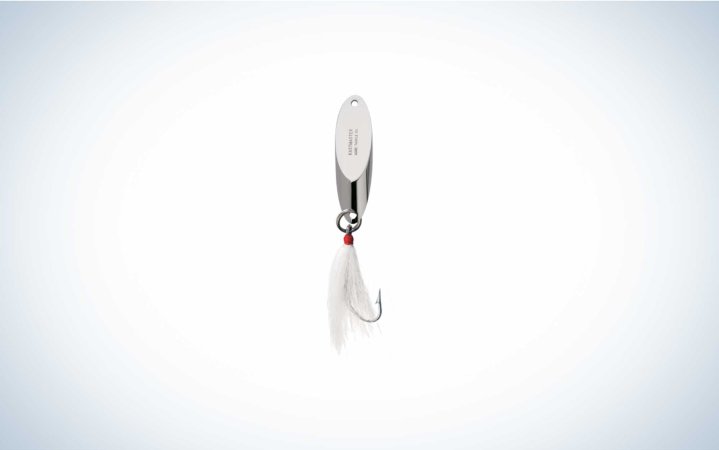Metal lures are boring. Scan the pegboard at any saltwater tackle shop in striper country and based purely on aesthetics, your eye isn’t likely to be drawn to them — not with dozens of dazzling plugs, custom wooden lures, and Japanese-inspired hard and soft baits staring back at you. But no matter how in vogue these modern lures might be, none have ever pushed metal lures off the shelves entirely. Why? Because for many common fall scenarios along the striper coast, a simple metal lure will outfish all of them.
There’s a reason metal lure designs haven’t changed much over the decades — you don’t fix what isn’t broken. Whether you’re chasing bass on a boat or from the surf, it’s critical that you have some handy. They fly far, drop fast, and often do a better job of mimicking what the stripers want to eat than the hottest new soft plastic. When you’re metal shopping, however, don’t get hung up on brands. Think instead in shapes and styles, because the truth is that one brand of metal won’t often outperform another if they’re similar in weight and profile. Here are the three types of metals you don’t want to hit the salt without this fall.
The classic four-side diamond jig has been around for nearly a century and from Atlantic halibut in the fjords of Norway to cod in Nova Scotia to yellowtail kingfish in California, there are very few saltwater species that won’t smack one. Available in a wide range of weights, diamond jigs can feature an undressed treble hook, or a long tail made from a piece of rubber tubing that features a single hook at the end. It’s the latter that’s most useful to striper anglers.
Diamond jigs were originally intended to be dropped straight down from a boat and jigged vertically. No doubt, the method will catch piles of stripers when they’re feeding on a slim baitfish like sand eels. Surf anglers, however, figured out that these heavy lead jigs will fly a mile, even into a hard onshore wind. When reeled back slowly across the bottom, the diamond jig creates puffs of sand that mimics a fleeing sand eel, and that wobbling rubber tail finishes the ruse. White and chartreuse are two of the most popular tail colors, but don’t sleep on black.
It’s a bit ironic that the Luhr Jensen Krocodile Spoon has become such a big player in the East Coast striper scene, because it was developed on the West Coast for salmon and trout. Nowadays, much like Q-Tip, “kroc spoon” is the common term for any flat, wide, baitfish-shaped spoon, of which there’s no shortage.
This style of spoon is less of a staple in the surf game, as its profile and weight make it less aerodynamic than other metal lures. However, if striped bass are feeding on juvenile menhaden — a.k.a. peanut bunker — right in the wash it can be an absolute killer on the beach. More commonly, though, these spoons shine when peanut bunker schools are getting hammered just offshore. Their design allows them to fall slowly, fluttering and flashing as they descend. This is key, as stripers often stun their prey then swing around and gobble up the dead and dying bunker fluttering to the bottom. To avoid line twist and fouling, add a barrel swivel between your main line and leader when fishing a Krocodile.
Casting Spoon
“Casting spoon” is a catch-all term for any metal lure with a wider profile but plenty of weight. Though there are many available, the Acme Kastmaster and Hopkins NO=EQL are arguably the two most famous and popular. What has made these lures stand the test of time is their versatility. They can be easily modified from a treble hook to a dressed or undressed single hook, and they can catch fish for years if you take care of them.
Read Next: Best Lures for Striped Bass
On the beach, you can send a casting spoon out past the last wave with ease. Reel quickly to get it skipping and jumping across the surface and you’ve got a lethal imitator of a scared or injured baitfish; let it drag across the bottom during the retrieve and you’re matching a sand eel. On the boat, they’ll drop faster than a Krocodile Spoon. Their wide profile also produces more flash and wobble than a diamond jig when seen from a distance.


